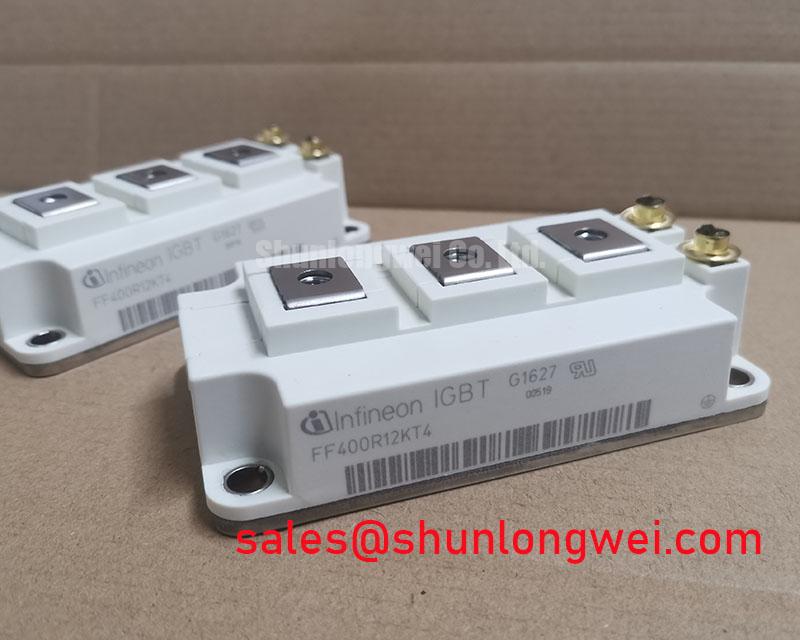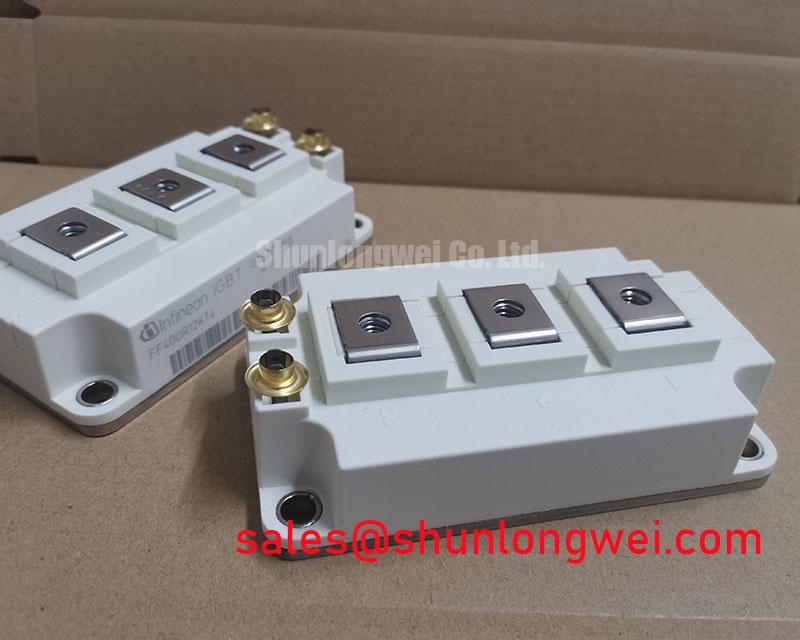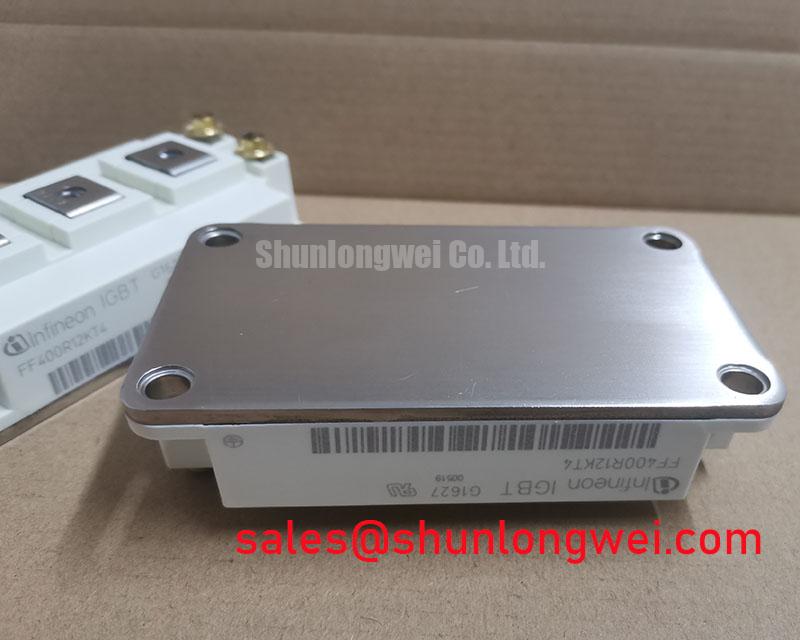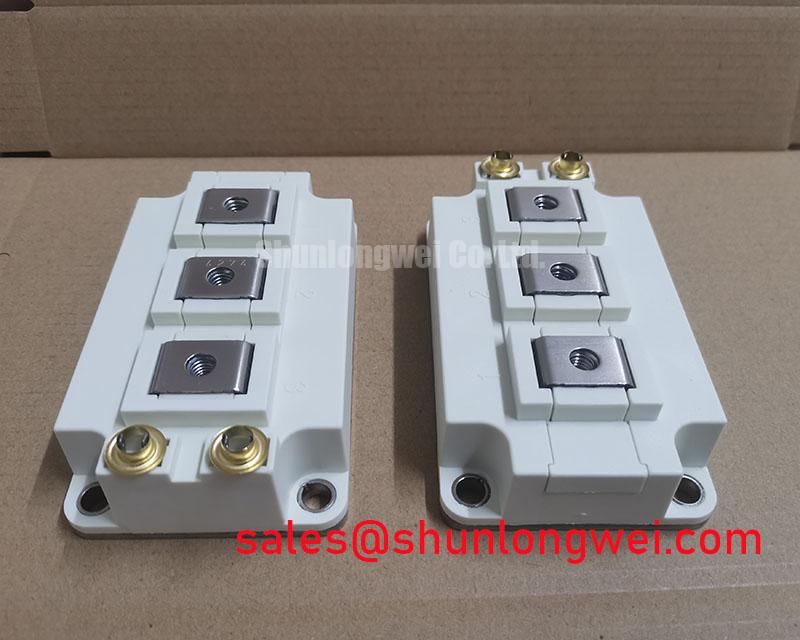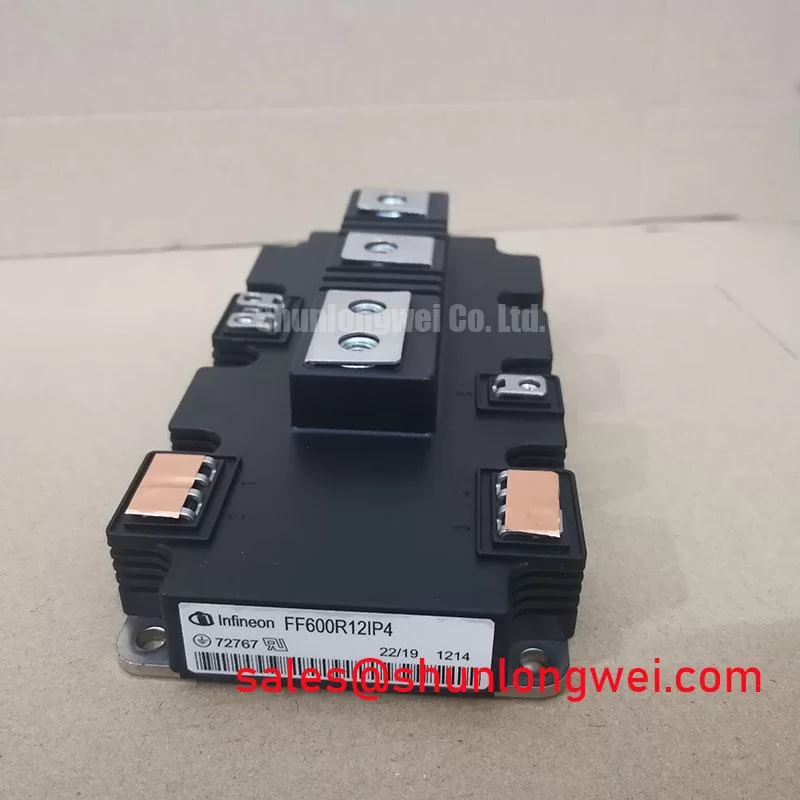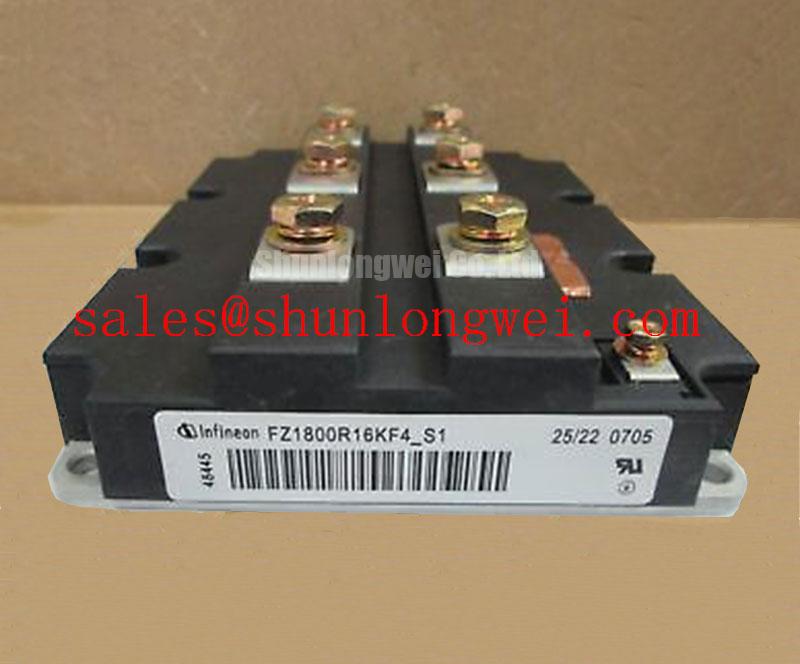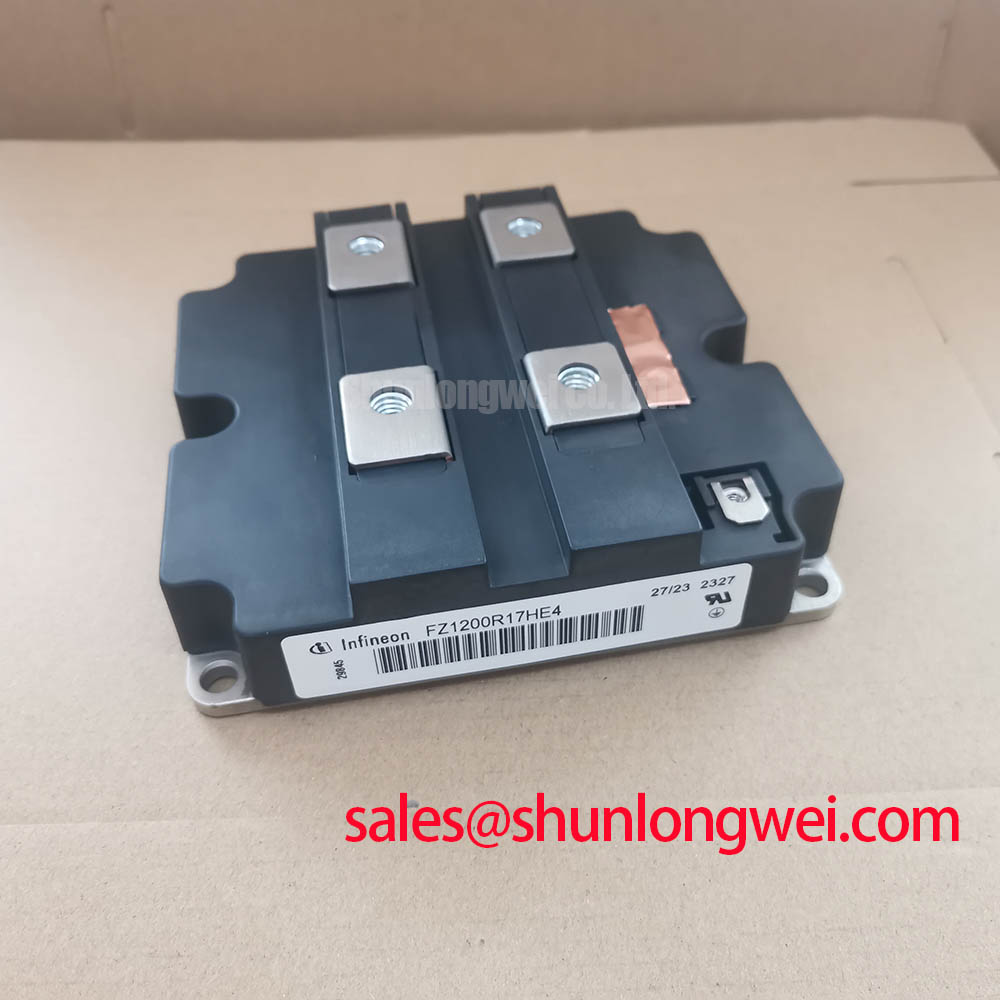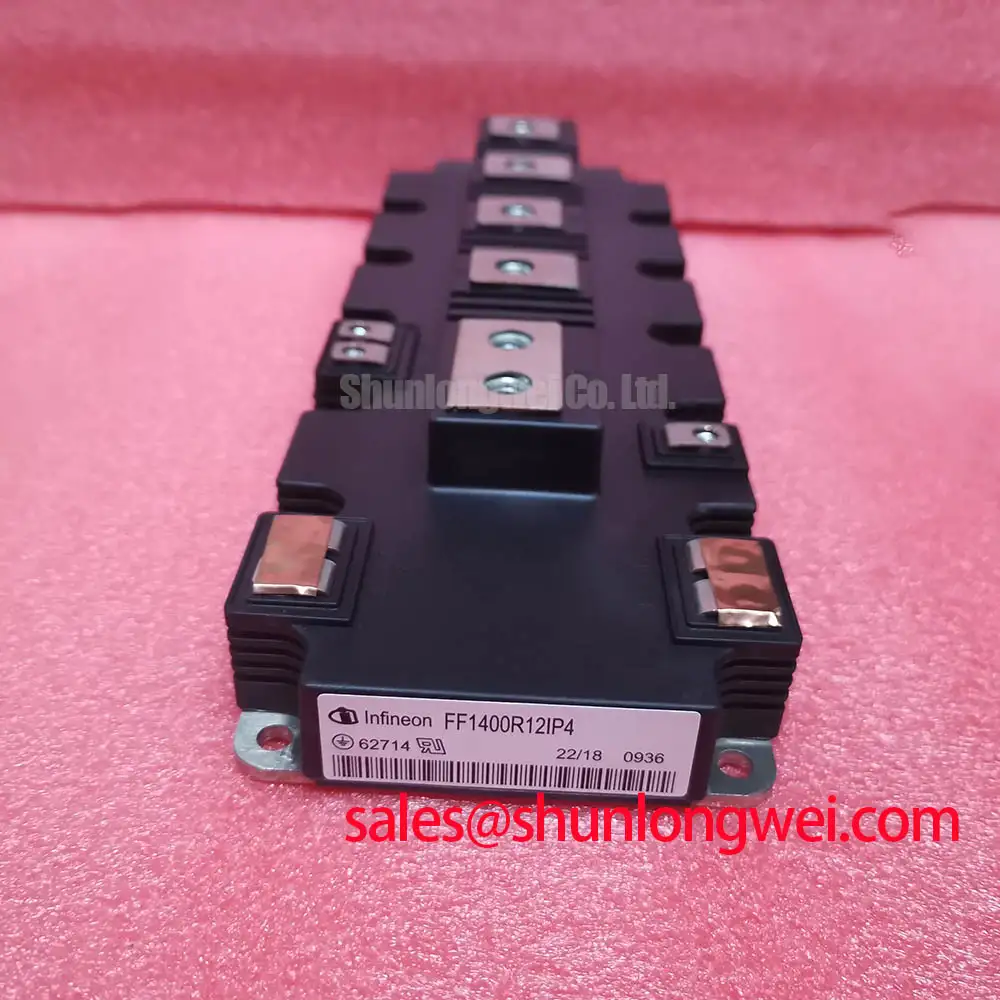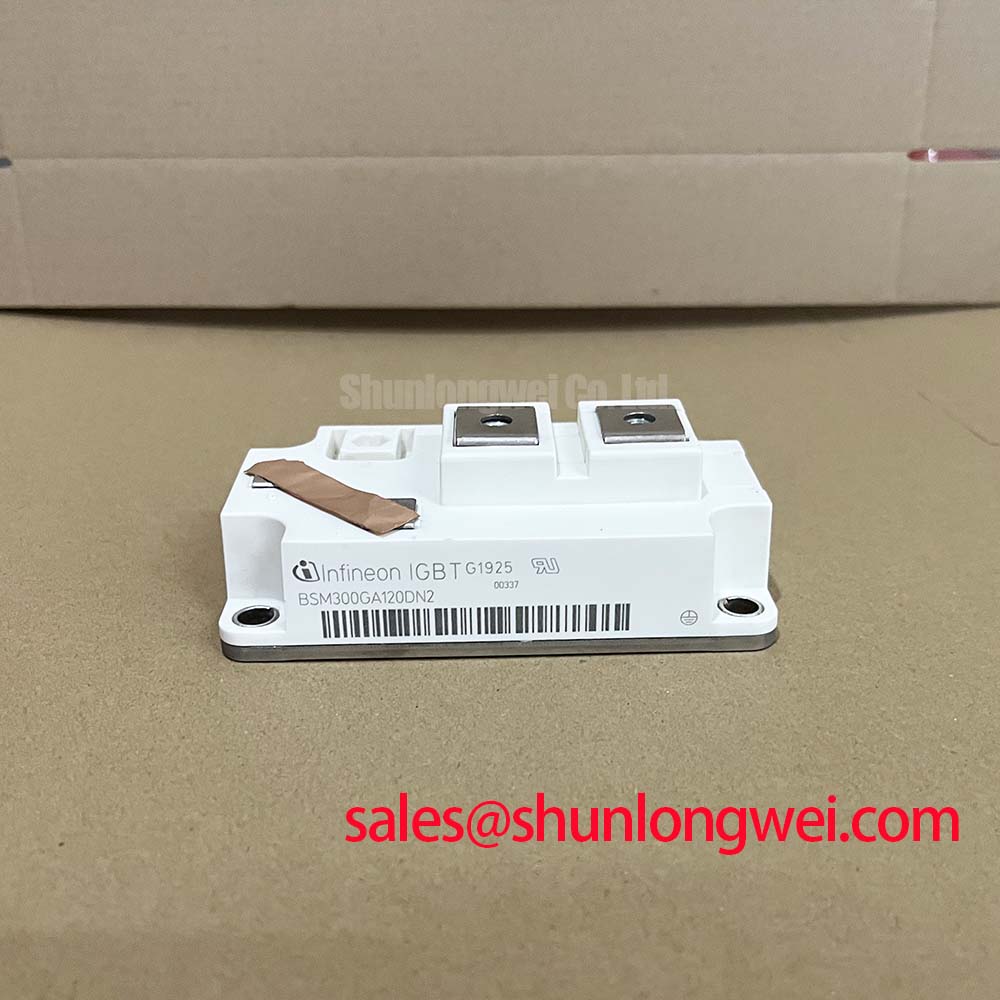Content last revised on November 18, 2025
Infineon FF400R12KT4: A Deep Dive into a High-Performance 1200V IGBT Module
Engineering High-Current Power Stages with Efficiency and Reliability
The Infineon FF400R12KT4 is a 1200V, 400A dual IGBT module engineered for high-power conversion systems where efficiency and thermal stability are critical design parameters. This module integrates fast Trench/Fieldstop IGBT4 technology with an Emitter Controlled high-efficiency diode in the industry-standard 62mm C-Series housing. Key specifications include: 1200V Collector-Emitter Voltage | 400A Nominal Collector Current | 175°C Maximum Operating Junction Temperature. Its primary engineering benefits are significantly reduced switching losses and a low saturation voltage (VCEsat), enabling higher operational efficiency. This module directly addresses the challenge of balancing performance and thermal management in demanding applications like high-power motor drives and renewable energy inverters. For systems requiring higher current handling within a similar voltage class, the FF450R12KT4 provides an increased current rating.
Key Parameter Overview
Decoding the Specs for Enhanced Thermal Performance
The technical specifications of the FF400R12KT4 are pivotal for system designers aiming to maximize power density and ensure long-term reliability. Each parameter provides insight into the module's behavior under real-world operating conditions.
| Parameter | Value | Engineering Interpretation |
|---|---|---|
| Collector-Emitter Voltage (VCES) | 1200 V | Provides the necessary voltage headroom and safety margin for applications connected to 400V to 690V AC lines, making it suitable for a wide range of industrial power systems. |
| Nominal DC Collector Current (IC nom) | 400 A (at TH = 85°C) | Defines the module's continuous current handling capability at a realistic case temperature, a critical factor for designing the thermal management system, such as the heatsink and airflow. |
| Collector-Emitter Saturation Voltage (VCEsat) | Typ. 1.90 V (at IC = 400 A, Tvj = 125°C) | A low VCEsat directly translates to lower conduction losses. Think of it as electrical friction; a lower value means less energy is wasted as heat during operation, which improves overall system efficiency and eases cooling requirements. |
| Total Switching Losses (Ets) | Typ. 34 mJ (at IC = 400 A, Tvj = 125°C) | This value is crucial for high-frequency applications. Lower switching energy losses allow the module to operate at higher frequencies without excessive heat generation, enabling more compact magnetic components and higher power density. |
| Thermal Resistance, Junction-to-Case (RthJC) | Max. 0.088 K/W (per IGBT) | This represents the efficiency of heat transfer from the silicon chip to the module's baseplate. A lower RthJC value is like having a wider pipe for heat to escape, ensuring the IGBT junction remains cooler and more reliable under load. |
| Maximum Operating Junction Temperature (Tvj max) | 175°C | The high operating temperature provides a significant thermal margin, enhancing the module's robustness and reliability in harsh industrial environments or applications with high ambient temperatures. |
Download the FF400R12KT4 datasheet for detailed specifications and performance curves.
Application Scenarios & Value
System-Level Benefits in Industrial Drives and Renewable Energy
The FF400R12KT4 IGBT module is engineered as a cornerstone component for high-power conversion systems. Its specific combination of low VCEsat and optimized switching characteristics makes it an excellent fit for demanding applications where efficiency directly impacts operating costs and system size. For designers of Variable Frequency Drives (VFDs), the primary engineering challenge is often managing the heat generated by power losses. The module's low conduction losses (VCEsat of 1.90V typ.) directly reduce this thermal burden, potentially allowing for a smaller, more cost-effective heatsink or enabling higher output power from a given frame size. This is particularly valuable in multi-axis servo drives where space is at a premium. Similarly, in central solar inverters and wind turbine converters, every percentage point of efficiency gained results in more energy delivered to the grid. The FF400R12KT4's TRENCHSTOP™ IGBT4 technology minimizes energy loss during each switching cycle, maximizing the overall energy harvest over the system's lifetime. For applications demanding different power levels, related modules like the FF300R12KT4 offer a lower current rating within the same family, providing design flexibility.
Frequently Asked Questions (FAQ)
What is the primary benefit of the TRENCHSTOP™ IGBT4 technology used in the FF400R12KT4?The key benefit is a superior trade-off between conduction losses (low VCEsat) and switching losses. This allows for higher efficiency in both low-frequency, high-current applications (like motor drives) and high-frequency applications (like switch-mode power supplies), providing greater design flexibility.
How does the positive temperature coefficient of VCEsat contribute to system reliability?A positive temperature coefficient means that as the IGBT chip heats up, its on-state resistance slightly increases. This characteristic is crucial for reliably paralleling multiple IGBT modules. It naturally promotes current sharing between the modules, preventing one device from carrying a disproportionate amount of current, which could otherwise lead to thermal runaway and failure.
What does the 175°C maximum operating junction temperature imply for my design?This high Tvj max provides a significant thermal safety margin. It allows the module to withstand temporary overload conditions and operate reliably in environments with high ambient temperatures. For design engineers, this translates to a more robust and fault-tolerant power stage, reducing the risk of field failures.
Is the pre-applied Thermal Interface Material (TIM) a significant feature?Yes, it is a critical feature for manufacturing efficiency and thermal performance. The pre-applied TIM ensures a consistent, optimized thermal connection between the module baseplate and the heatsink, eliminating guesswork and process variations associated with manual application. This leads to more predictable and reliable thermal management across production units.
Can the FF400R12KT4 be used in applications requiring high short-circuit robustness?The datasheet specifies a short-circuit withstand time (tsc) of 10 µs at Tvj = 150°C. This level of robustness is essential for protecting the module during fault conditions, such as a motor phase-to-phase short, giving the gate drive protection circuitry enough time to detect the fault and safely shut down the IGBT.
Technical Deep Dive
Analyzing the TRENCHSTOP™ IGBT4 and Emitter Controlled Diode Synergy
At the core of the FF400R12KT4's performance is the synergy between its two key silicon components: the Trench/Fieldstop IGBT4 and the Emitter Controlled high-efficiency diode. The IGBT4 technology represents a significant step in balancing the on-state voltage (VCEsat) and the energy required to switch the device on and off. The "Trench" structure creates a vertical gate, allowing for a higher density of cells on the chip, which reduces the on-state resistance. This is analogous to opening more lanes on a highway to reduce traffic congestion for the current flow. The "Fieldstop" layer, a crucial addition, is a much thinner, lightly doped collector region that abruptly stops the electric field. This allows for a much thinner overall chip, which dramatically reduces the "tail current" during turn-off, thereby slashing switching losses (Eoff). This combination is what enables the module to achieve both low conduction and low switching losses simultaneously. The Emitter Controlled diode is equally important. It is optimized for soft recovery, meaning it turns off with minimal voltage overshoot and oscillation. This reduces electromagnetic interference (EMI) and lessens the stress on the complementary IGBT in the half-bridge configuration, contributing to the overall reliability and simplifying the requirements for snubber circuits.
An Engineer's Perspective on Design Implementation
From a design engineer's viewpoint, the FF400R12KT4 offers a robust and well-characterized building block for high-power systems. The comprehensive data provided in the official datasheet, particularly the performance curves showing VCEsat and switching losses across different temperatures and currents, allows for accurate loss modeling and thermal simulation. This data-driven approach is fundamental to right-sizing the cooling system and predicting real-world efficiency. The module's standard 62mm footprint simplifies mechanical integration and facilitates upgrades from older-generation modules. Ultimately, the FF400R12KT4 provides a reliable foundation for developing power electronics that are not only powerful but also efficient and built to last in demanding industrial settings.


